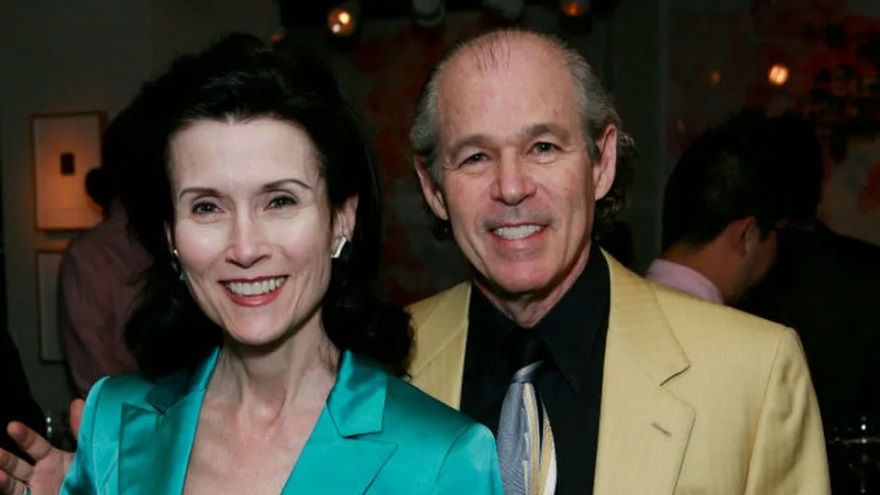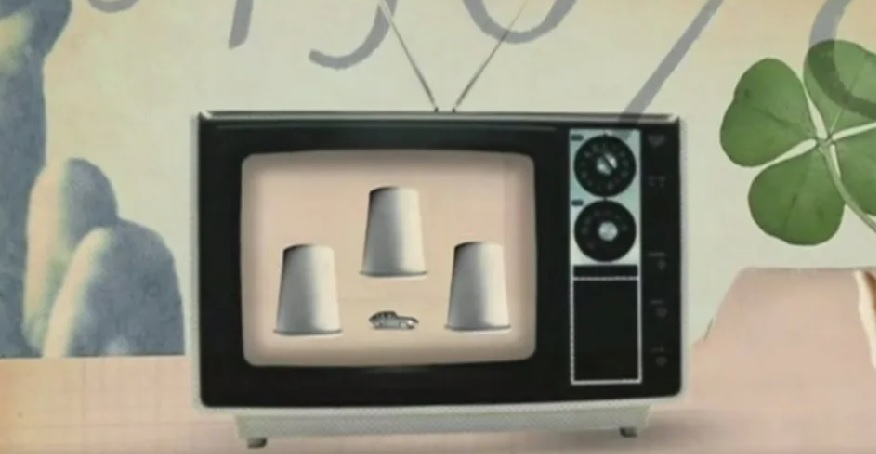Imagine you have a chance to win a new car, but to get it, You must choose the door in which the keys are among three options that you have in front of you.
Suppose you choose door 2, the one in the middle. So the contest host wants to help you and to add excitement to the contest he reveals what’s behind one of the doors (he already knows where the car is).
So open door 3, where the car is not.
The presenter makes you an offer: Do you keep the door 2 that you chose? Or do you prefer to change it to door 1?
If you think about it a bit, There are two possibilities left and it may be that you assume that there is a 50% chance that you will be correct and win the car, and 50% of you going home with a goat.
But if you think about it, as Marilyn vos Savant did, you would have almost two thirds chance (66%) of winning the car.
And everything has to do with something as simple or as complicated as a probability analysis.
The riddle that the woman with the highest IQ in the world solved
The riddle that the woman with the highest IQ in the world solved
Marilyn Mach vos Savant, now 76 years old, was for a long time the columnist of “Ask Marilyn”, a space in the US press. in which she answered questions, riddles and offered her points of view on many topics , notes the BBC.
She is also the author of fiction and non-fiction books, and was an investment entrepreneur. But since she was a child she had another more notable title.
After taking a couple of intelligence quotient (IQ) tests, on one of them he scored 228, more than double the average.
The Guinness Book of World Records recorded her from 1985 to 1989 as the woman with the highest IQ on record. That is why she was called “the smartest person in the world.”
Problem solving exercise
In IQ tests there are some approaches like this, in which you have to create the shape that is on the right in gray, eliminating sections of those that appear colored to the left. If you remove one below and there is a void, the one above it falls.

Vos Savant is the daughter of European immigrants who settled in the city of St. Louis, Missouri, in the central US, where she was born in August 1946.
She was convinced that people should have both parents’ last names. And that’s why she adopted her mother’s maiden name, Savant, which curiously means “wise person” in French.
As he progressed in his education, he excelled in math and science at his school. On her 10th birthday, she took the Stanford-Binet and Hoeflin’s Mega IQ tests. It was in the latter that she obtained the score of 228 that the Guinness organization took into consideration.
Since then she was considered a child prodigy, even though that didn’t change his lifestyle much. In his adolescence, he has told, he helped in his parents’ store and he liked to read a lot.
And far from being interested in a prestigious Ivy League university in the US, he chose to study philosophy at Washington University in his native St. Louis. However, he abandoned his studies to dedicate himself to a family investment business.
In the 1970s she generated enough money to self-finance her desire to be a writer. He participated in intelligence test publications, such as the Omni IQ Quiz Contest, as well as his own literary works and articles in magazines and newspapers.
After moving to New York, he appeared on David Letterman’s all-star talk show and Joe Franklyn’s. He almost always received questions about what intelligence is.
“Intelligence would be your overall ability to take advantage of experience,” he expounded on Franklyn. “IQ could, at most, measure your ability to use that intelligence.”

In a third marriage, Vos Savant married Robert Jarvik, one of the creators of the first artificial heart, the Jarvik-7.
by then created the “Ask Marilyn” column, syndicated nationally in Parade magazine which was included in many newspapers.
It was in 1989 when he was asked about the dilemma of which door to choose to win the prize. Her response caused a stir, even among statisticians and scientists.
The answer to the riddle
The idea behind the car riddle was nothing new when it came to Vos Savant’s column.
Since a couple of decades before, was known as “The Monty Hall Problem” after the host of the American television show Let’s Make a Deal (“Let’s make a deal”) where similar situations arose.
Statistician Steve Selvin, among others, presented a solution in the American Statistician academic journal in 1975.
The Monty Hall problem and its solutions have been tested in universities and on television shows. BBC Magazine picked it up in a 2013 production.

Since a couple of decades before, the riddle was known as “The Monty Hall problem”.
But it was Vos Savant’s response, very similar in logic to Selvin’s, that caused the stir.
“Yes; you should change. Lat first gate you have a third chance of winning, but the second gate has a two-thirds chance. This is a good way to visualize what happened. Suppose there are a million doors and you choose door number 1. Then the host, who knows what’s behind the doors and will always avoid the one with the prize, opens all of them except door #777,777. You change the door fast, don’t you?”, said his answer.
His statement produced a shower of responses. Vos Savant said he received about 10,000 letters, including about 1,000 from mathematicians and doctors in various disciplines, The New York Times reported in a 1991 article.
“You messed it up!” said Robert Sachs, a professor at George Mason University in Virginia. “As a professional mathematician, I am very concerned about the general public’s lack of math skills. Please help by confessing your mistake, and be more careful in the future.”
For a time, Vos Savant defended his answer, despite criticism.
“You are dead wrong,” wrote E. Ray Bobo, a professor of mathematics at Georgetown University. “How many angry mathematicians does it take to change your mind?”
I was right?
Vos Savant’s answer is correct, as long as the presenter reveals what is behind a wrong door and offer the opportunity to change. That is why this problem belongs to the branch of conditional probability.
By choosing the door, you start the contest with a 1/3 chance of winning. The other 2/3 are under the control of the presenter. You may have chosen the right one, but you still only have a 33% chance of success.
When the presenter reveals one of the wrong choices, If you change your choice, you add another third of the possibilities in your favor (66%).
The usual mistake is to assume that you have a 50% chance at that moment, since a condition was met there (the opening of one of the doors) that generates a new scenario.
The fact of changing doors does not guarantee that you will win the car, it only increases the possibilities as long as the variable that the presenter opens a door is met, which will never be the one with the car keys, but a goat.

For a time, Vos Savant defended his answer, despite criticism.
This has been proven multiple times. A few years ago, the BBC was part of the experiment in which Cardiff University students were divided into presenters of the show and contestants.
Those who switched were roughly twice as successful., because among 30 contestants who decided to do it, 18 won the car. That is, there was a 60% hit rate. Meanwhile, of 30 who decided to keep their choice, there were only 11 correct answers, a rate of 36%.
Vos Savant did not receive as many letters of apology as criticism, but one did, from Professor Sachs who said: “Now I am eating the cake of humility. I promised as penance to respond to all the people who wrote to reprimand me. This has been a deep professional shame.”
Others argued that the initial question from the reader who wrote to “Ask Marilyn” never specified that the host should necessarily offer a change or reveal a door.
In Let’s Make a Deal, Monty Hall actually had it up to him to offer change or not, and he even added one more variable: cash to tempt the contestant into taking their first pick, and the more he offered, the more he motivated. the contestant to change doors and fail.
Giving everyone expensive gifts, like a car, was not the intention of the show. And Hall was the one in charge of the situation.


